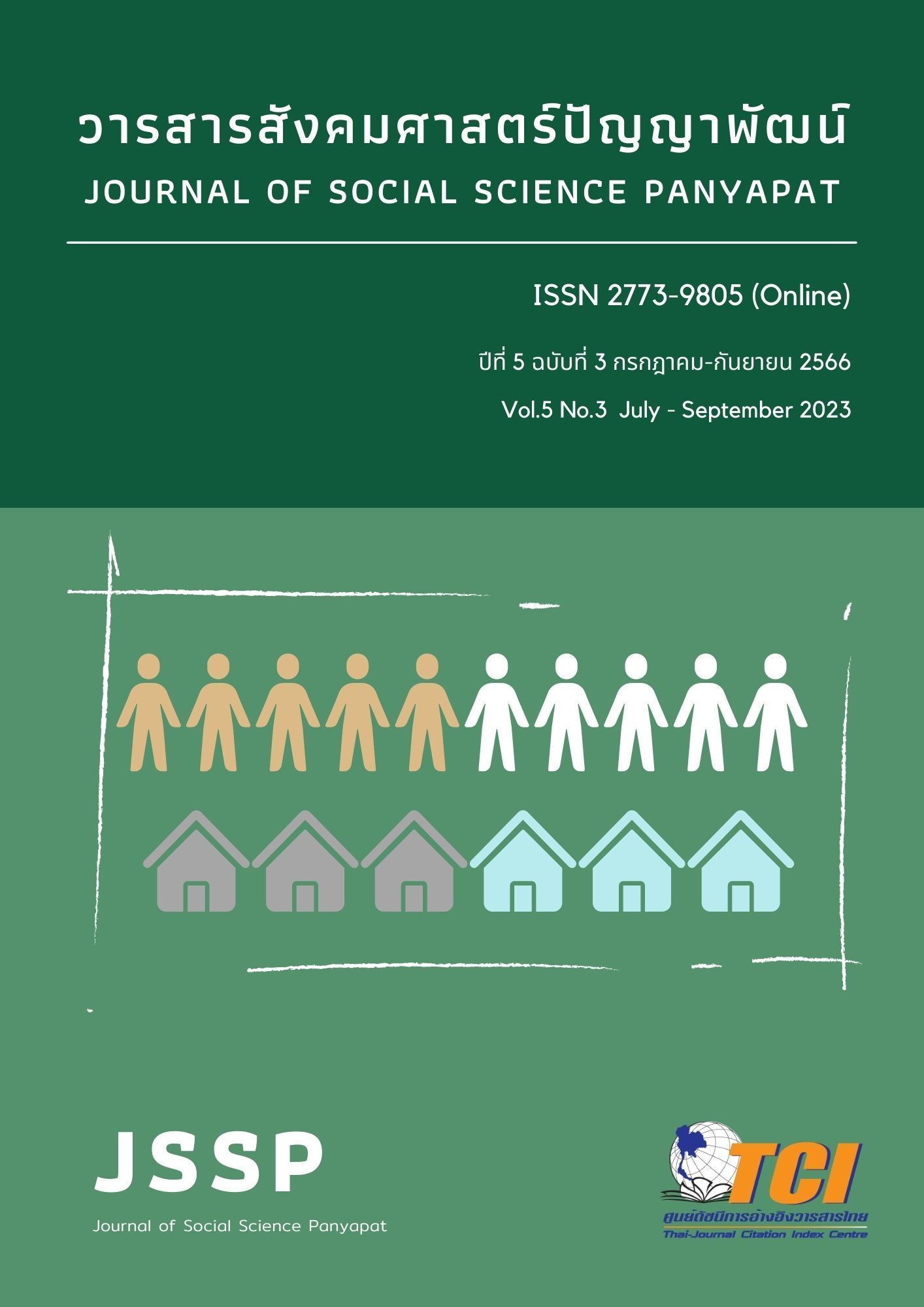Ganges: Garbage in the River from Faith and Religious Beliefs
Keywords:
Belief, Ganges River, Rubbish of faithAbstract
The purpose of this article aim to present Ganges: Garbage in The River from Faith and Religious Beliefs. The Ganges is a river that Hindus respect and believe in. By worshiping valuable objects and using them for various rituals, it is believed that once in the lives of Hindu believers, must find opportunities to make pilgrimages and perform sacred rituals according to the beliefs that have been handed down from the past to the present. Faith and belief in the worship of the Ganges with objects such as Krathongs, garlands, flowers, valuable, ashes from the remains, etc. Those things turn out to be environmental issues. As a result, the water in the Ganges River is rotten, one of the dirtiest rivers in the world. The worship of Ganges, with traditional Hindu beliefs, today has become garbage from faith, resulting in garbage problems for the towns along the banks of the Ganges River next to Varanasi. Those cities must have costs or budgets to manage waste in the river that they have not made, it is a social cost that must be borne by others to litter from faith and lost opportunities from spending money to develop the city in other aspects to solve the problem of waste from faith in the Ganges.
References
กนิษฐา เรืองวรรณศักดิ์. (2557). ลวดลายประทับดินเผาบ้านเชียง : บูรณาการสู่การออกแบบผลิตภัณฑ์เชิงพาณิชย์. วารสารศิลปกรรมศาสตร์ มหาวิทยาลัยขอนแก่น,6(2), 1-25.
กรมควบคุมมลพิษ. (2561). การจัดสรรงบประมาณเพื่อจัดการขยะมูลฝอยของประเทศไทย ข้อมูลสถิติ พ.ศ. 2561. สืบค้น 11 มีนาคม 2566. จาก https://www.pcd.go.th/garbage/page/2.
กรุงเทพธุรกิจ. (2565). ส่อง Top 10 ประเทศ “ประชากรสูงสุด” ภายในปี 2593. สืบค้น 11 มีนาคม 2566. จาก https://www.bangkokbiznews.com/social/1021643.
คณา คชา. (2563). พาราณสีเมืองแห่งเทพเจ้า และความศรัทธา.สืบค้น 10 มีนาคม 2566. จาก https://themomentum.co/varanasi-india/.
ทวี ทวีวาร. (2535). อารยธรรมโลก. (พิมพ์ครั้งที่ 2). กรุงเทพฯ: มหาวิทยาลัยรามคำแหง.
พระพรหมคุณาภรณ์ (ป.อ.ปยุตฺโต). (2548). พจนานุกรมพุทธศาสตร์ ฉบับประมวลธรรม. (พิมพ์ครั้งที่ 12). กรุงเทพฯ: โรงพิมพ์มหาจุฬาลงกรณราชวิทยาลัย.
ภาควิชาประวัติศาสตร์. (2542). มนุษย์กับอารยธรรม. กรุงเทพฯ: มหาวิทยาลัยศรีนครินทรวิโรฒ.
มหาจุฬาลงกรณราชวิทยาลัย. (2539). พระไตรปิฎกภาษาไทย ฉบับมหาจุฬาลงกรณราชวิทยาลัย. กรุงเทพฯ: โรงพิมพ์มหาจุฬาลงกรณราชวิทยาลัย.
สุมล นานัสฤดู. (2545). หลักเศรษฐศาสตร์ 1. (พิมพ์ครั้งที่ 4). กรุงเทพฯ: บริษัทจุดทองจำกัด.
สุรัตน์ โหราชัยกุล และ ณัฐ วัชรคิรินทร์. (2564). คงคา สายธาราแห่งชีวิต. สืบค้น 10 มีนาคม 2566. จาก https://curadio.chula.ac.th/Program-Detail.php?id=11232.
อรพินท์ ปานนาค,มาตยา อิงคนารก, สมบูรณ์ธรรมครองอาตม์, ประกัสสร บุญประเสริฐ และ ศิวพร ชัยประสิทธิกุล. (2539).อารยธรรมตะวันออก. (พิมพ์ครั้งที่ 7). กรุงเทพฯ: มหาวิทยาลัยรามคำแหง.
Geographical. (2022). The Ganges: river of life, religion and pollution. Retrieved 18 August 2023. from https://geographical.co.uk/culture/the-ganges-river-of-life-religion-and-pollution.
Sharma, M. (2022). Ban on single-use plastic by July 1, is India Inc ready. Retrieved 18 August 2023. from https://www.indiatoday.in/business/story/single-use-plastic-indian-govt-ready-to-face-ban-1968568-2022-06-30.
Thaiontours Team. (2563). แม่น้ำคงคา (Ganges River) เมืองพาราณสี ประเทศอินเดีย. สืบค้น 10 มีนาคม 2566. จาก https://thaiontours.com/india/ganges-river-india.
Downloads
Published
How to Cite
Issue
Section
License
Copyright (c) 2023 Journal of Social Science Panyapat

This work is licensed under a Creative Commons Attribution-NonCommercial-NoDerivatives 4.0 International License.


